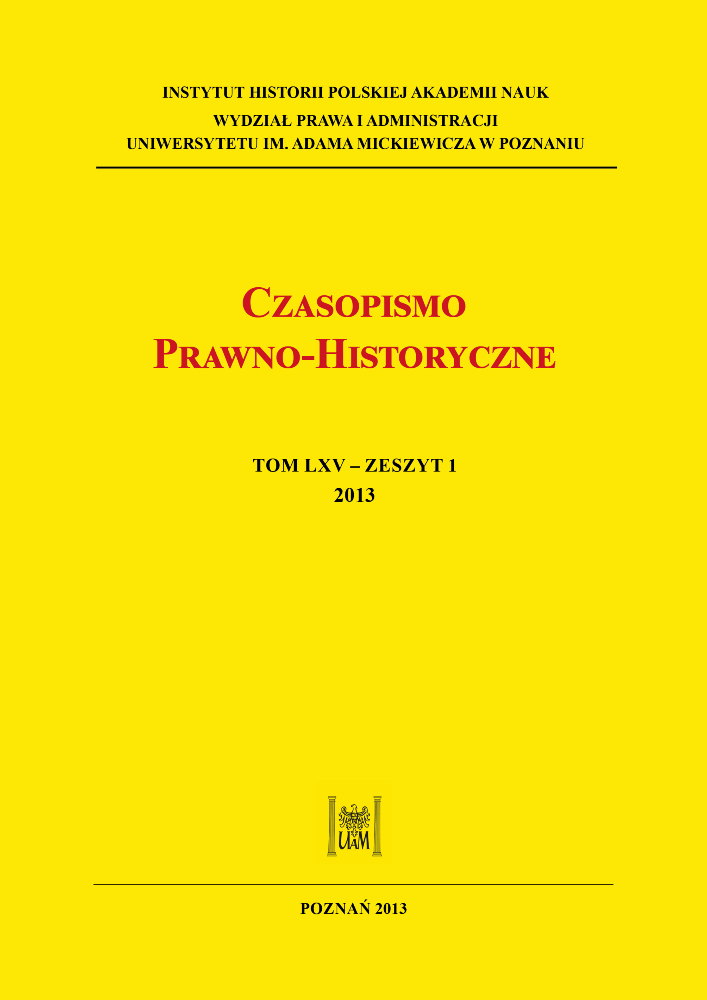Abstrakt
The purpose of this paper is to outline the legal practice in the Crimean Khanate in the 17th century. This longest surviving Eastern European post-Genghis state is a very interesting case for any student of the history of political systems and law. This is because its law and state institutions were based on both Mongolian and Islamic-Ottoman models, producing a highly original system. The study is based on rich data surviving in Crimean court registers from the reign of Khan Murad Giray (1678-1683). Treating them as ancillary sources, it makes use of selected entries in other surviving Crimean court registers from 1608-1783 supplemented by information taken from other sources: Tatar, Ottoman and European. The study attempts to fi nd answers to the following questions: who, against whom and in what types of cases, appeared in a given type of court in the Khanate. Answering these questions reveals not only what everyday life of the Khan’s subjects, coming from various social groups, looked like, but also what principles were followed by the Khanate’s legal system and administration. The collected data shows that the Khan fulfi lled the basic duty of any Muslim ruler and gave his subjects access to courts and ensured that law was obeyed. The Khanate was divided into judicial circuits (kazas) in which the highest-ranking offi cial was a judge (kadi). Subjects could also approach the highest judge (cadiasker) about a matter that concerned them. However, there are reasons to believe that his judicial authority was restricted with respect to estates (beyliks) belonging to grand families (karachis) and when it came to this social group itself. The sources also indicate that the Khan’s judicial authority was restricted in lands supervised by a kalga – the fi rst deputy of the Khan chosen from among the members of the ruling dynasty. The study of the cases entered in the registers of a cadiasker court and the registers of a provincial court in Kara Su during the reign of Murad Giray, shows that the clients of the Khan’s justice were members of all social groups, men and women, Muslims and non-Muslims. The frequency in which people appeared in court and the types of cases they litigated, differed slightly depending on their social background, sex and religion. The paper attempts to explain these differences by carefully analysing the social background of parties, their place of residence, sex, types of cases and litigation strategies.
Licencja
Copyright
© 2013 Wydział Prawa i Administracji UAM w Poznaniu
OPEN ACCESS




